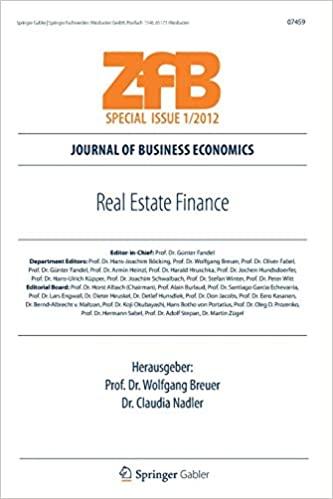Question
Complete the following textbook problems: Ch. 1, p. 22 & 23, #16 as either depository or nondepository. Explain the general difference between depository and nondepository
Complete the following textbook problems:
Ch. 1, p. 22 & 23, #16 as either depository or nondepository. Explain the general difference between depository and nondepository institution sources of funds. It is often said that all types of financial institutions have begun to offer services that were previously offered only by certain types. Consequently, the operations of many financial institutions are becoming more similar. Nevertheless, performance levels still differ significantly among types of financial institutions. Why? Ch. 1, p. 23, #17 Financial Intermediation Look in a business periodical for news about a recent financial transaction involving two financial institutions. For this transaction, determine the following: a. How will each institution's balance sheet be affected? b. Will either institution receive immediate income from the transaction? c. Who is the ultimate user of funds? d. Who is the ultimate source of funds? Ch. 2, p. 45, #1 Interest Rate Movements Explain why interest rates changed as they did over the past year. Ch. 2, p. 45, #8 Nominal versus Real Interest Rate What is the difference between the nominal interest rate and the real interest rate? What is the logic behind the implied positive relationship between expected inflation and nominal interest rates? Ch. 2, p. 45, #12 Impact of Expected Inflation How might expectations of higher oil prices affect the demand for loanable funds, the supply of loanable funds, and interest rates in the United States? Will the interest rates of other countries be affected in the same way? Explain. Ch. 2, p. 45, #13
Global Interaction of Interest Rates Why might you expect interest rate movements of various industrialized countries to be more highly correlated in recent years than in earlier years? Ch. 3, p. 71, #1 Characteristics That Affect Security Yields Identify the relevant characteristics of any security that can affect its yield. Ch. 3, p. 71, #3 Impact of Liquidity on Yield Discuss the relationship between the yield and liquidity of securities Ch. 3, p. 71, #6 Forward Rate What is the meaning of the forward rate in the context of the term structure of interest rates? Why might forward rates consistently overestimate future interest rates? How could such a bias be avoided? Ch. 3, p. 72, #15 Yield Curve Assuming that liquidity and interest rate expectations are both important for explaining the shape of a yield curve, what does a flat yield curve indicate about the market's perception of future interest rates? Ch. 3, p. 72, #17 Multiple Effects on the Yield Curve Assume that (1) investors and borrowers expect that the economy will weaken and that inflation will decline, (2) investors require a small liquidity premium, and (3) markets are partially segmented and the Treasury currently has a preference for borrowing in short-term markets. Explain how each of these forces would affect the term structure, holding other factors constant. Then explain the effect on the term structure overall. Ch. 3, p. 72, #19 How the Yield Curve May Respond to Prevailing Conditions Consider how economic conditions affect the default risk premium. Do you think the default risk premium will likely increase or decrease during this semester? How do you think the yield curve will change during this semester? Offer some logic to support your answers.
Step by Step Solution
There are 3 Steps involved in it
Step: 1

Get Instant Access to Expert-Tailored Solutions
See step-by-step solutions with expert insights and AI powered tools for academic success
Step: 2

Step: 3

Ace Your Homework with AI
Get the answers you need in no time with our AI-driven, step-by-step assistance
Get Started


